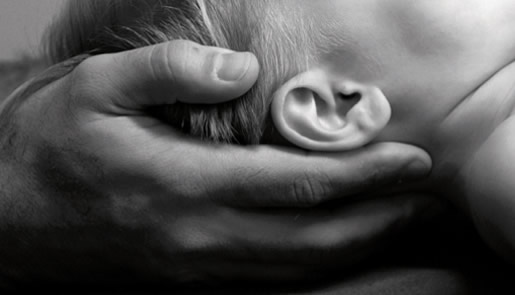

Osteopathy for children is a special field within the field of osteopathy. To treat infants and children, it is important to have knowledge of the different stages of development of children. In order to be able to treat children adequately, it is necessary to have knowledge of the normal sensory, emotional and neurologic development of a child and the special pathology of children. In this case it is possible to adequately recognise and treat dysfunctions of the normal embryologic and foetal development that can occur during pregnancy.
Additionally, if there are problems with the changeover of bodily functions of a newborn, e.g. with autonomous breathing and the intake of food, they can be treated well through osteopathy. A focused training as an osteopath for children is also necessary when it comes to assess and to treat different qualities of bodily tissue and structure.
An osteopath which works as a paediatrician combines this knowledge with his palpatory skills and uses very subtle techniques to improve the child's sense of balance and therefore its wellbeing and health. Since small children cannot communicate through language what their problems are, a carefully assessment of the whole body in an osteopathic treatment can be of great assistance in the assessment of the state of a small patient.
A child which did not have a birth without complications, which cries a lot, even though basic needs such as sleep, adequate nutrition, the right room-temperature and a clean diaper are met and even though seemingly nothing is amiss, is a child that needs treatment from the point of view of the osteopath. Often it is possible to help such a child through osteopathic treatment quick and effectively. Many adverse effects can be corrected through one or two osteopathic treatments.
Frequent indications for a paediatric treatment are:
-
complications during pregnancy and birth
- growth and developmental problems (ADD, learning difficulties)
- digestive disorders (colics)
- Urogenital disorders (incontinence)
- asymmetries of the skull, malposition of the jaw
- allergies
- emotional traumas (e.g. birth trauma)
